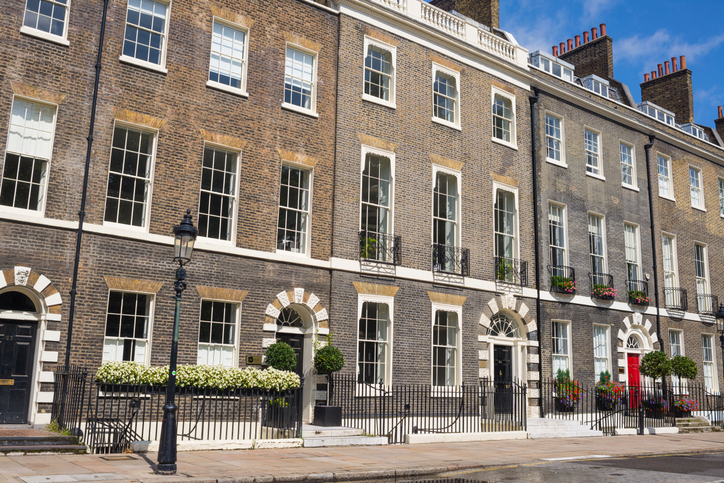Below is your guide to renovating heritage and listed buildings in London. This guide covers:
Understanding Listing Statuses & Regulations
Historic England designates listed buildings in the UK for their special architectural or historical significance and are legally protected.
There are three listing grades:
Grade I: Buildings of exceptional interest.
Grade II*: Particularly important buildings of more than special interest.
Grade II: Buildings of national importance and special interest.
Renovating a listed building requires obtaining Listed Building Consent (LBC) from the local planning authority, which covers both internal and external works.
Planning permission may also be required for certain alterations or extensions in addition to LBC
Compliance with building regulations is necessary for any structural changes, electrical work, plumbing, etc.
Early engagement with the local conservation officer is crucial to ensure compliance.
Challenges & Considerations when undertaking a renovation on a listed or heritage building.
Renovations often involve unexpected discoveries such as hidden structural issues, hazardous materials, or historical artefacts. Albion Ra is prepared to handle these challenges responsibly and effectively.
Balancing the preservation of historic features with the introduction of modern amenities can be complex. Albion Ra’s experience ensures the successful integration of both.
Renovating listed buildings can be significantly more expensive than renovating modern properties. Albion Ra provides transparent budgeting and planning to ensure cost-effectiveness.
Renovating heritage and listed buildings is a delicate and rewarding undertaking. By choosing Albion Ra, you can be confident that your projects will be handled with the utmost care, expertise, and respect for the historical significance of these properties. Albion Ra combines traditional craftsmanship with modern technology to deliver exceptional results that meet the needs of contemporary living while preserving the legacy of London’s architectural treasures.
Balancing Preservation with Modernization
One primary challenge is striking the right balance between preserving the historical fabric of the building and adapting it for contemporary use. While it’s crucial to retain the original character and significance of the structure, incorporating modern amenities such as energy-efficient technologies, updated plumbing and electrical systems, and open-plan living spaces is also important. A successful renovation requires sensitive design and thoughtful planning to ensure that modern interventions complement rather than compromise the historical integrity.
For example, homeowners may want to install double glazing or make the property completely watertight by replacing lime mortar walls with modern concrete and using modern paints. However, these seemingly innocuous changes can cause damage to the fabric of the building. Sealing a historic property that likely doesn’t have a damp course removes its ability to breathe and can lead to internal damp issues. Replacing historic glazing with highly sealed windows eliminates the natural airflow that these houses have always had, which can also cause damp and rotting timbers. Applying modern technologies to historic buildings requires careful, tailored advice from specialist building conservationists.
Working Within Regulatory Constraints
Navigating the regulatory landscape is another significant challenge. Listed building consent is required for any alterations or extensions that could affect the building’s special interest, and this is separate from obtaining planning permission. Engaging with the local conservation officer and relevant authorities early in the planning stage is essential to ensure compliance with regulations8. Even seemingly minor changes, such as replacing windows or altering the interior layout, might require listed building consent. Our professionals will work with your and third parties to establish what constraints exist in your project.
Addressing Structural Issues
Older buildings often have hidden structural issues. Thorough surveys and structural assessments are necessary to identify potential problems such as damp, rot, or subsidence. Unforeseen issues can emerge during the renovation, adding complexity and potentially increasing costs.
Finding Skilled Craftspeople
A critical challenge is finding skilled artisans who specialize in heritage conservation. Preserving listed buildings requires a level of craftsmanship that goes beyond typical construction projects. These specialists understand the specific needs of the building’s period and architectural style, ensuring the authenticity of the restoration. From repairing intricate woodwork and restoring historic facades to recreating period-specific features, their expertise is essential to the project’s success.
Albion Ra will assemble a team of experienced craftspeople with the experience to undertake a challenging heritage renovation, ensuring that the finished product meets the practical living needs of the client, whilst satisfying all regulations.
Managing Costs and Expectations
Renovating a listed building can be significantly more expensive than renovating a modern property. The need for specialist skills, materials, and time adds to the overall cost. In addition, setting realistic expectations about the project’s timeline is important. Renovating a listed building often takes longer than a modern property due to the need for careful preservation and regulatory approvals.
Unexpected Discoveries
Old properties can bring surprises during the renovation process. Discovering bats in the roof or uncovering human bones in the original foundations are possibilities that require flexibility and adaptation. Sometimes, these discoveries can be integrated into the design, such as uncovering an old well in the kitchen floor and making it a feature of the room.
Design challenges to overcome.
- Limited space for modern amenities.
- Restrictions on altering facades.
- Integrating new technologies into historic structures.
- The presence of hazardous materials, such as lead paint and asbestos, in older buildings.
- Balancing community expectations with preservation goals.
Addressing these challenges requires a collaborative approach that involves architects, conservation specialists, skilled craftspeople, and the client. Open communication, careful planning, and a deep respect for the building’s history are essential for a successful renovation project.
Choosing Albion Ra
Professionals choose Albion Ra because we understand that renovating listed buildings requires a unique balance of preservation and adaptation.
Albion Ra possesses the expertise to:
- Preserve original features such as ornate cornices, decorative plasterwork, and historic windows.
- Adapt buildings for contemporary use by incorporating energy-efficient technologies, updating plumbing and electrical systems, or creating open-plan living spaces.
Five benefits Albion Ra will bring to your project.
- Experienced professionals: Albion Ra boasts a team familiar with the challenges and regulations of heritage projects. We have undertaken numerous sympathetic renovations of heritage buildings.
- Skilled Craftsmanship: Albion Ra has access to skilled artisans who specialise in heritage conservation and possess expertise in specific periods and architectural styles.
- Comprehensive services: Albion Ra coordinates all parties involved in the process, including conservation specialists, heritage consultants, and ecologists.
- End-to-end project management: Albion Ra leads clients through every stage of the renovation, from initial concept designs to completion.
- Sensitivity to historical significance: Albion Ra approaches each project with the goal of creating beautiful, thoughtful, and sensitive designs that respect the original property and its historical context.
To find out more about our experience and to speak with Albion Ra about your specific project call us or send us an e-mail at enquires@albionra.co.uk.
We will be happy to arrange a no-obligation site visit with our managing director, Laimis Ragaisis.
 01322 470 300
01322 470 300



